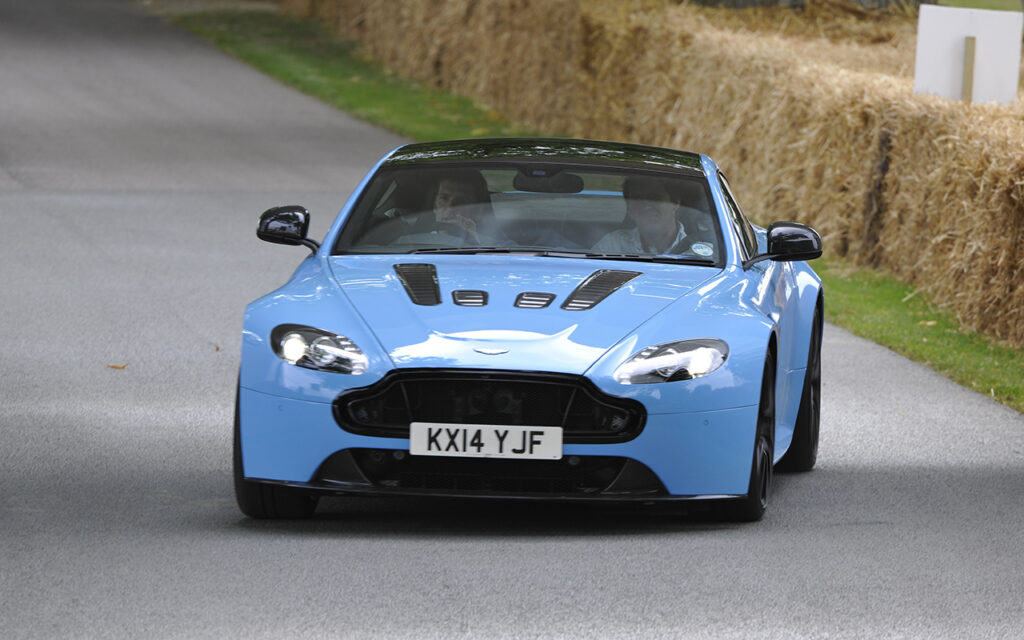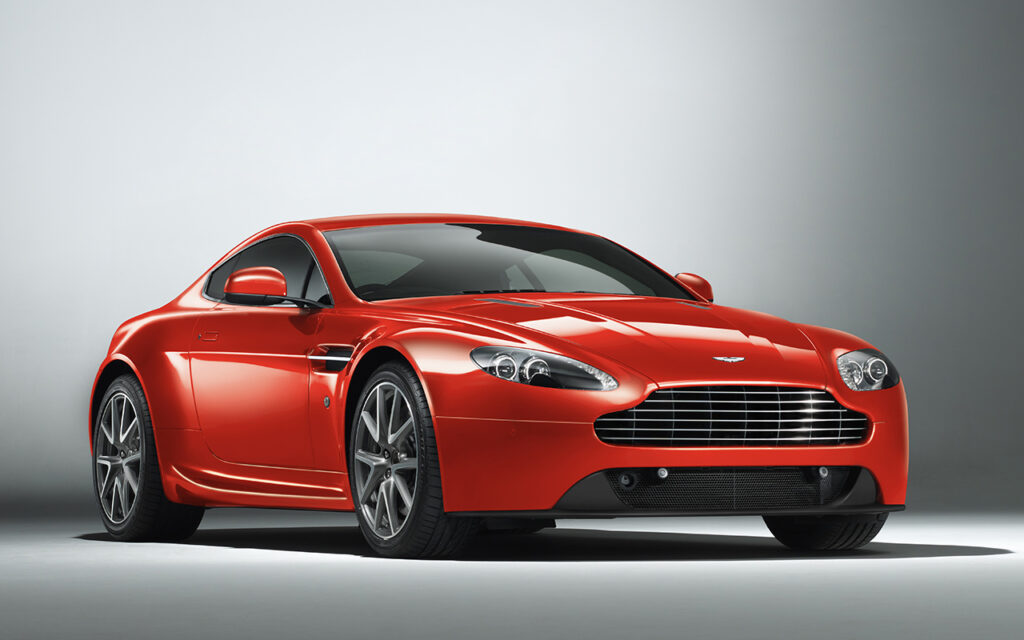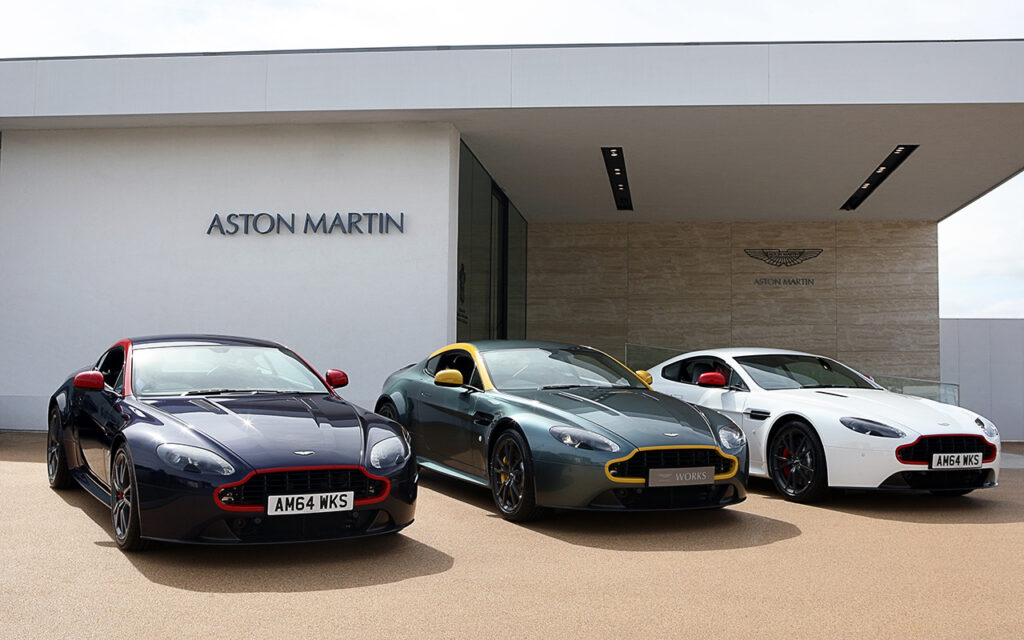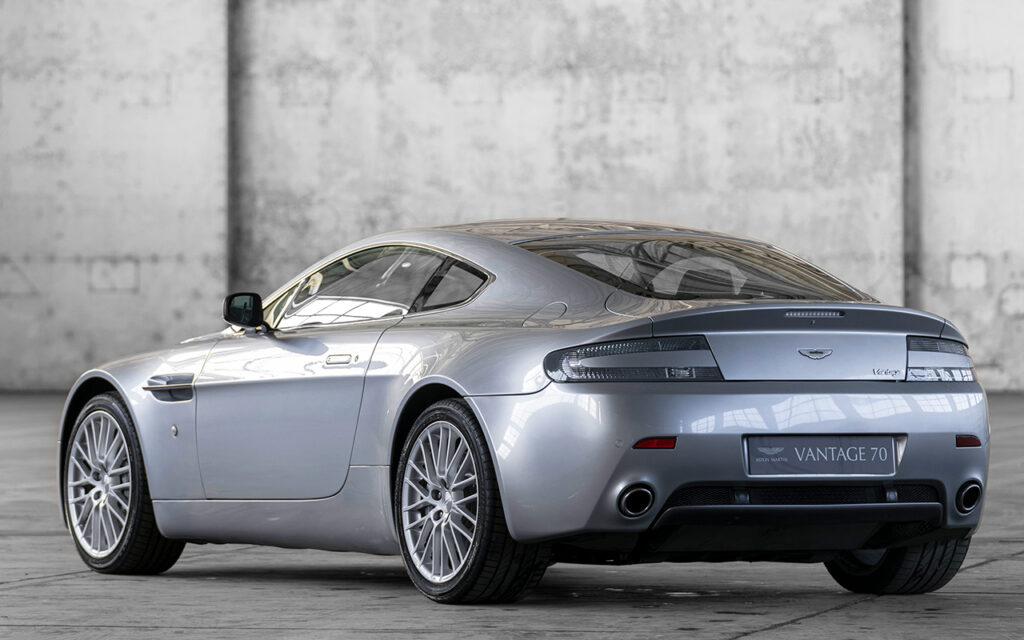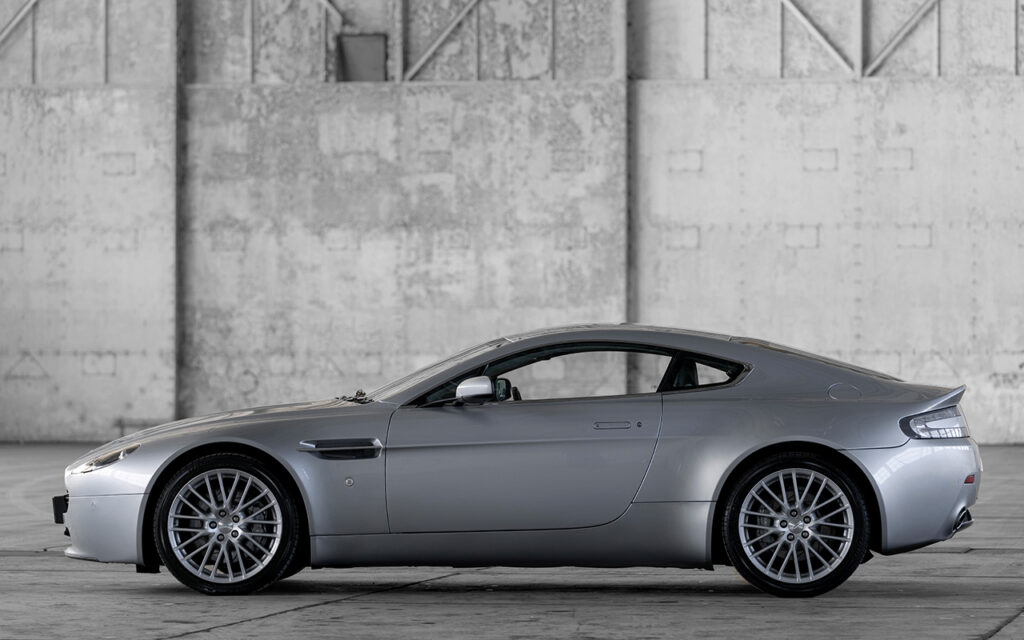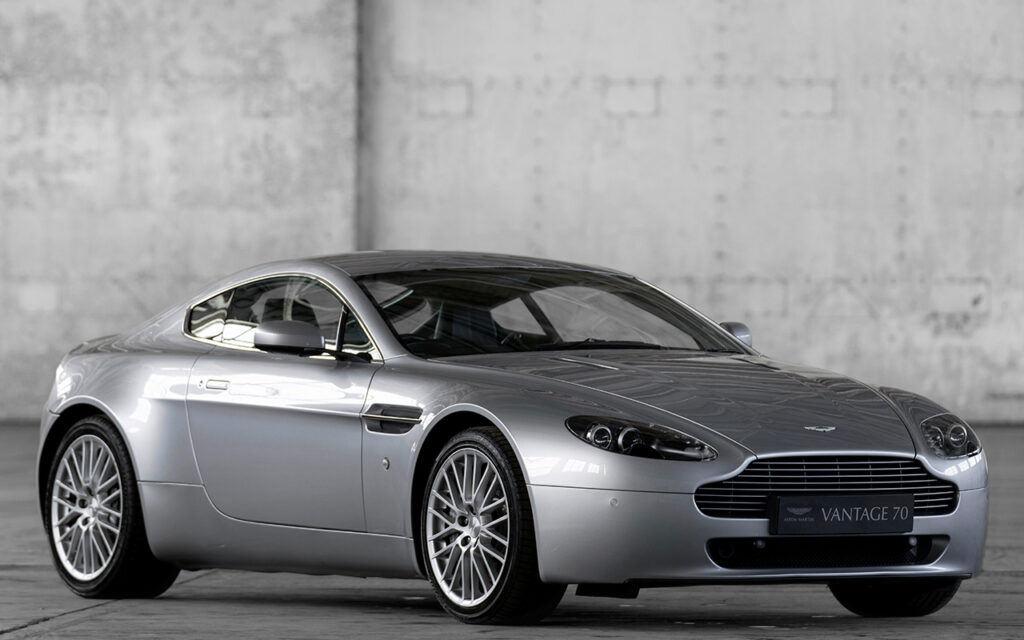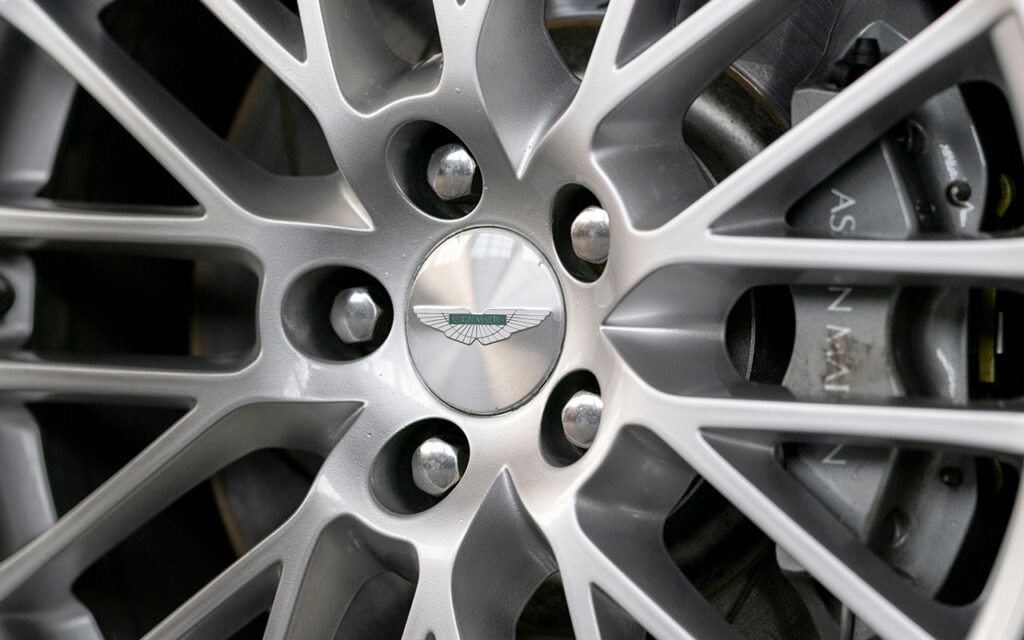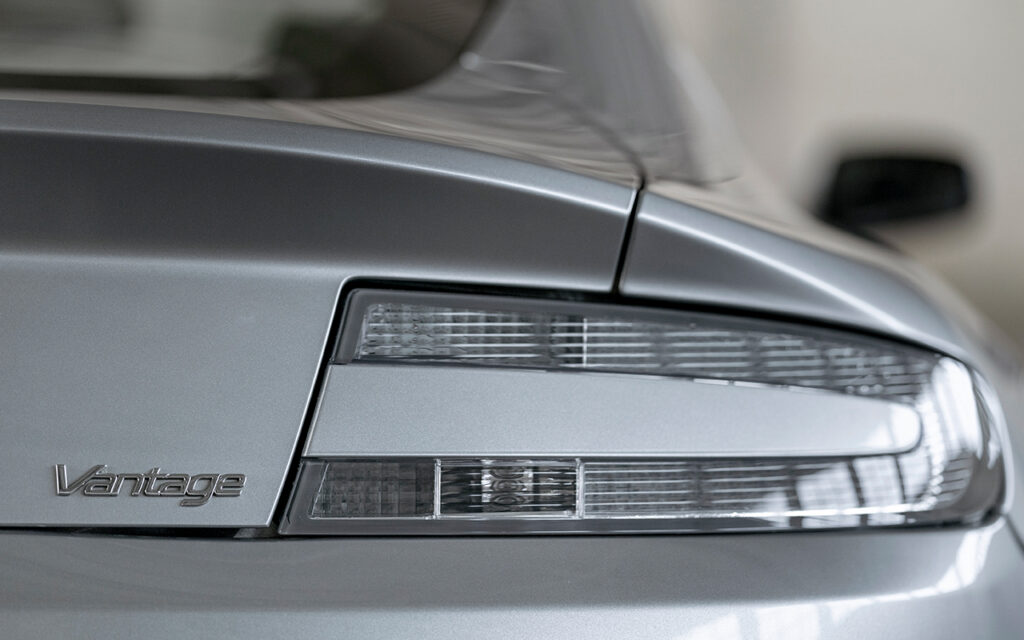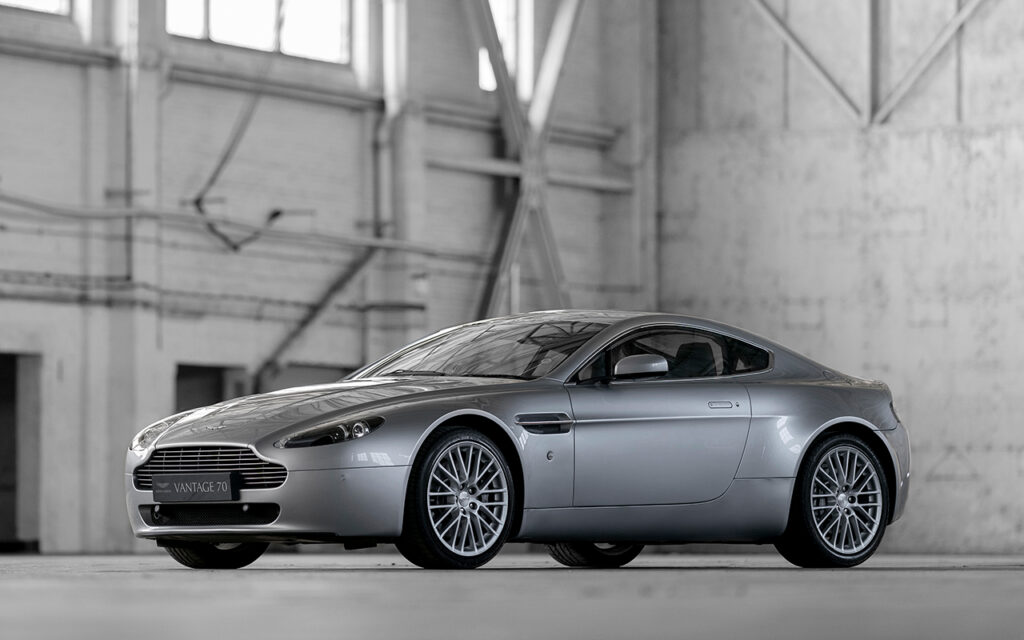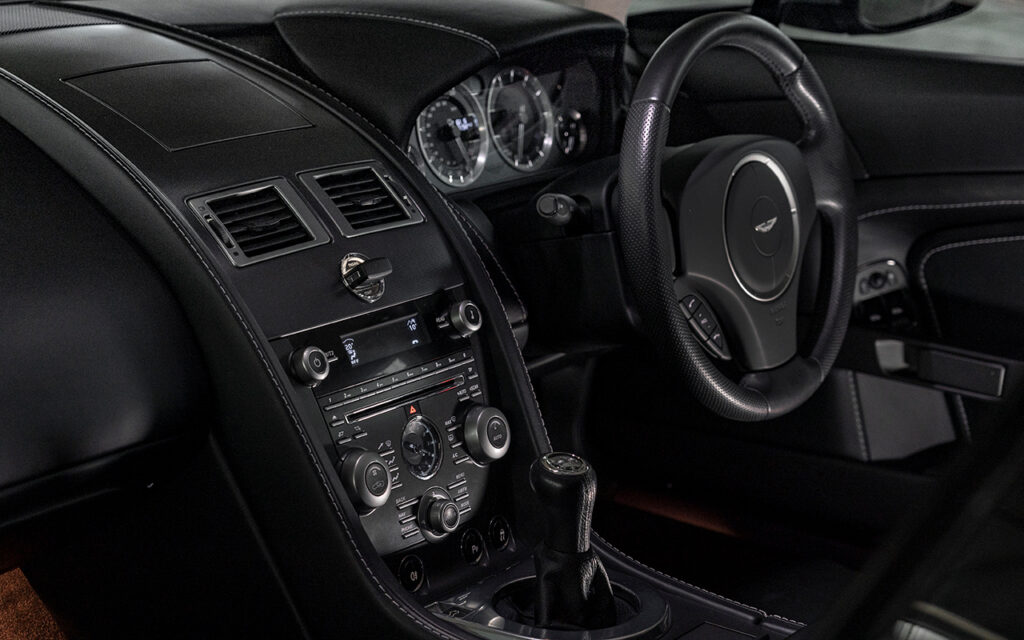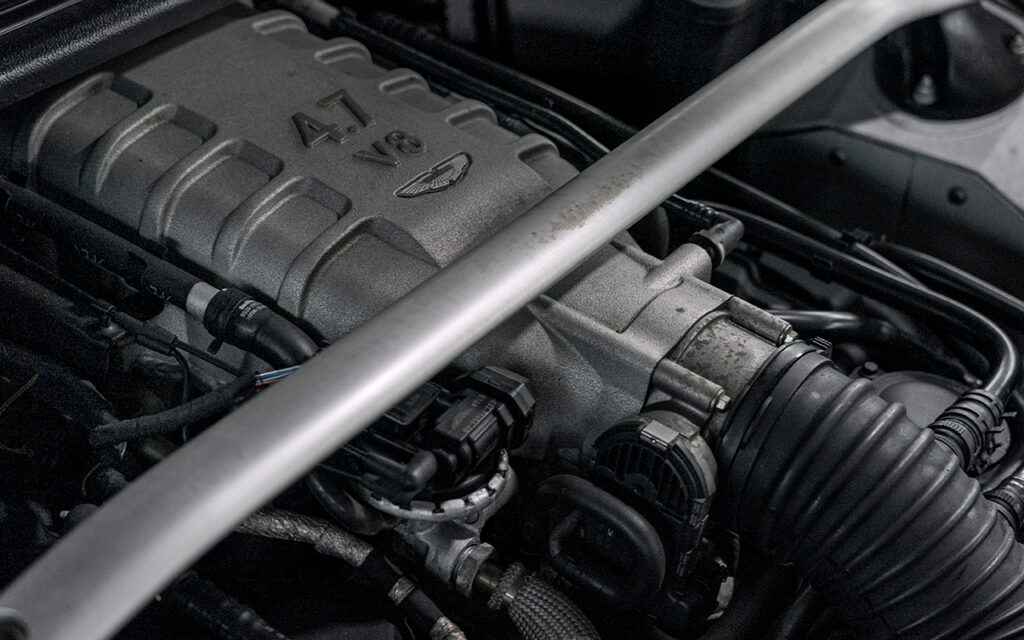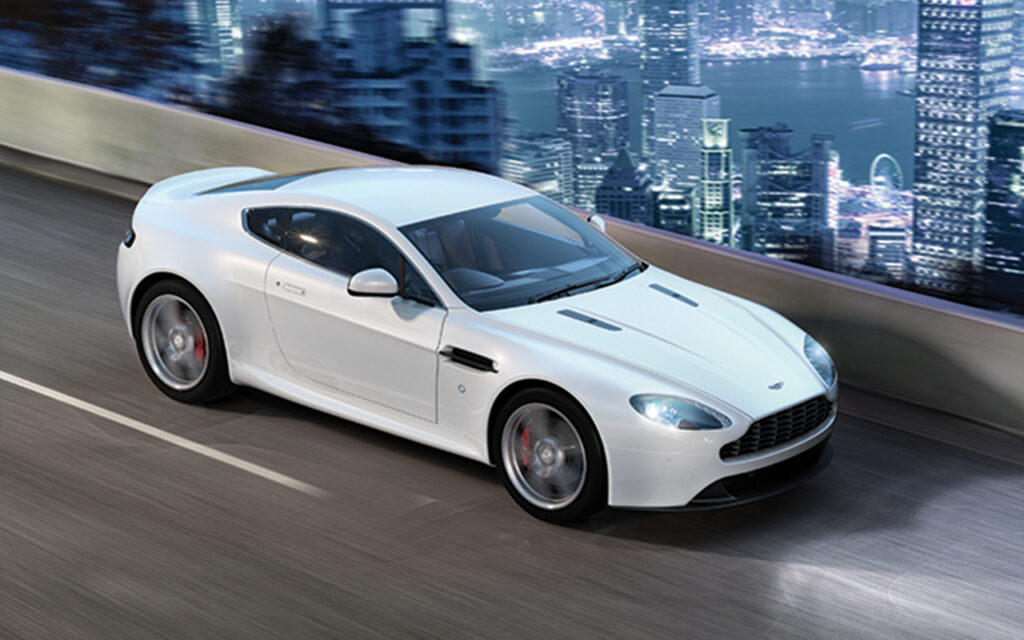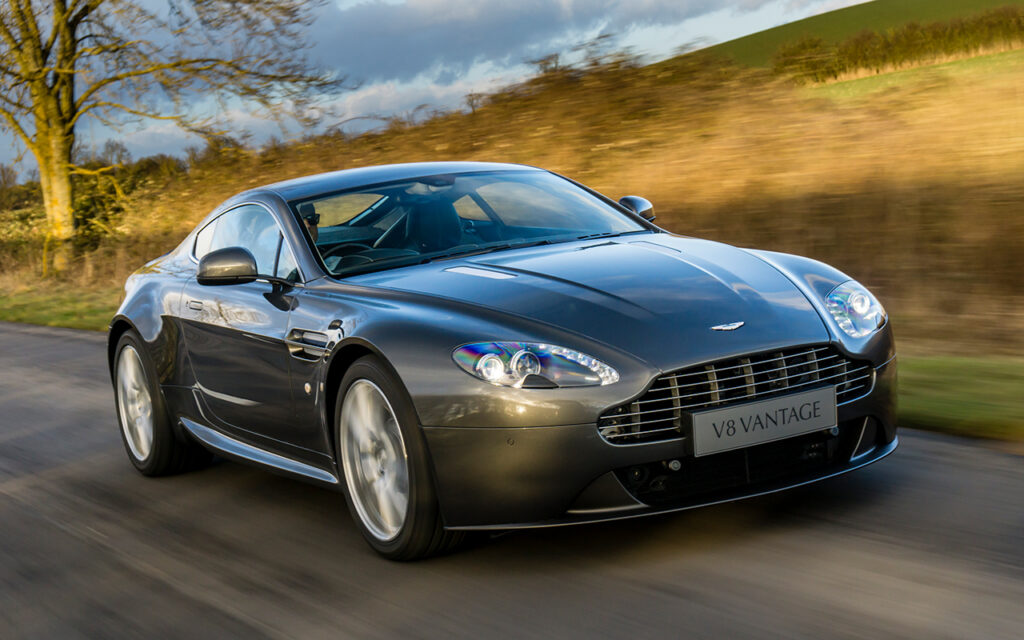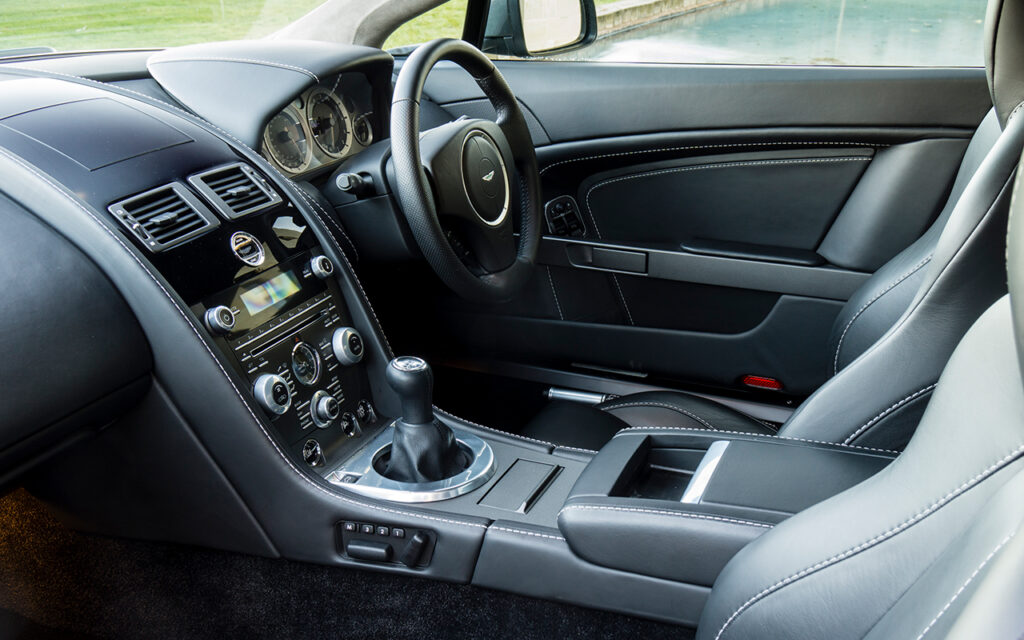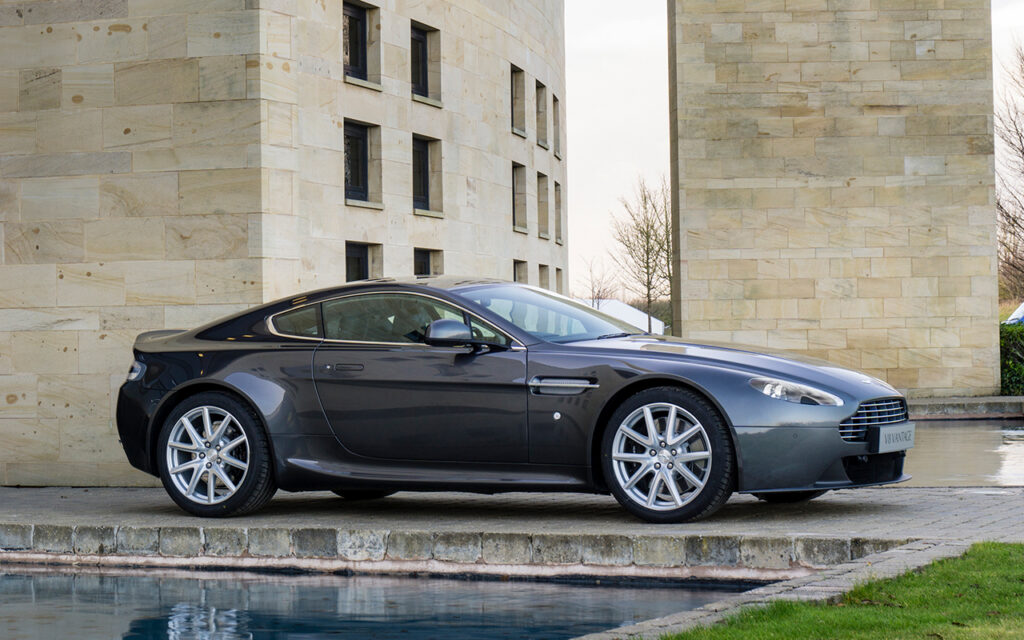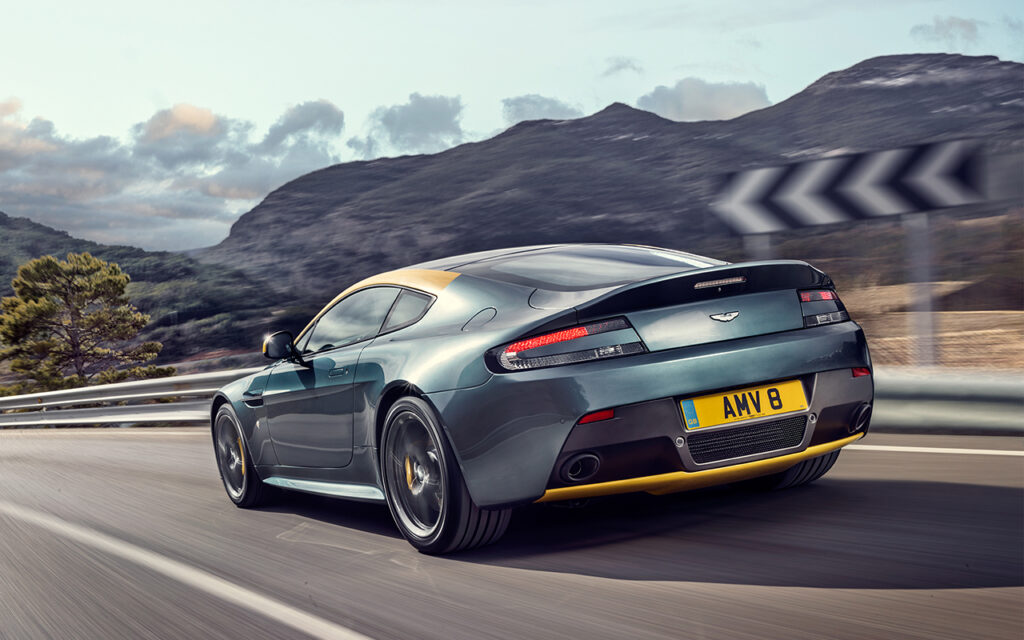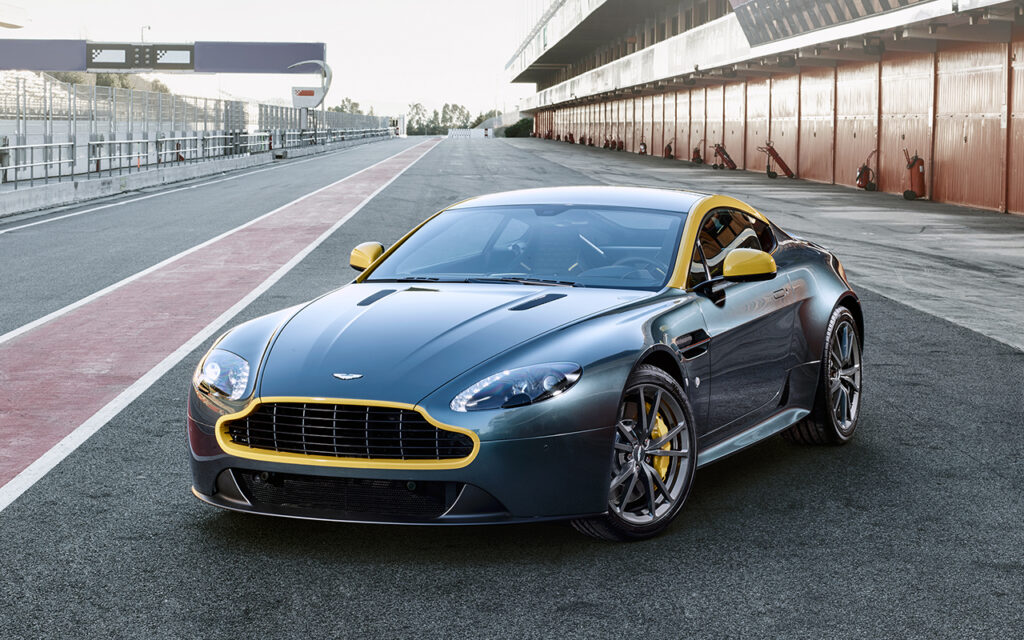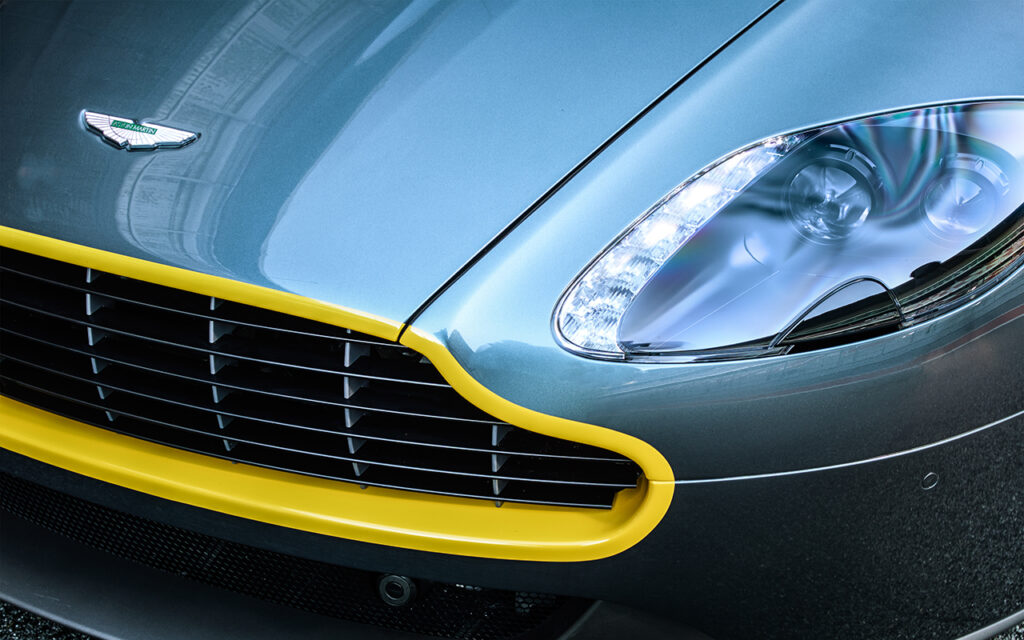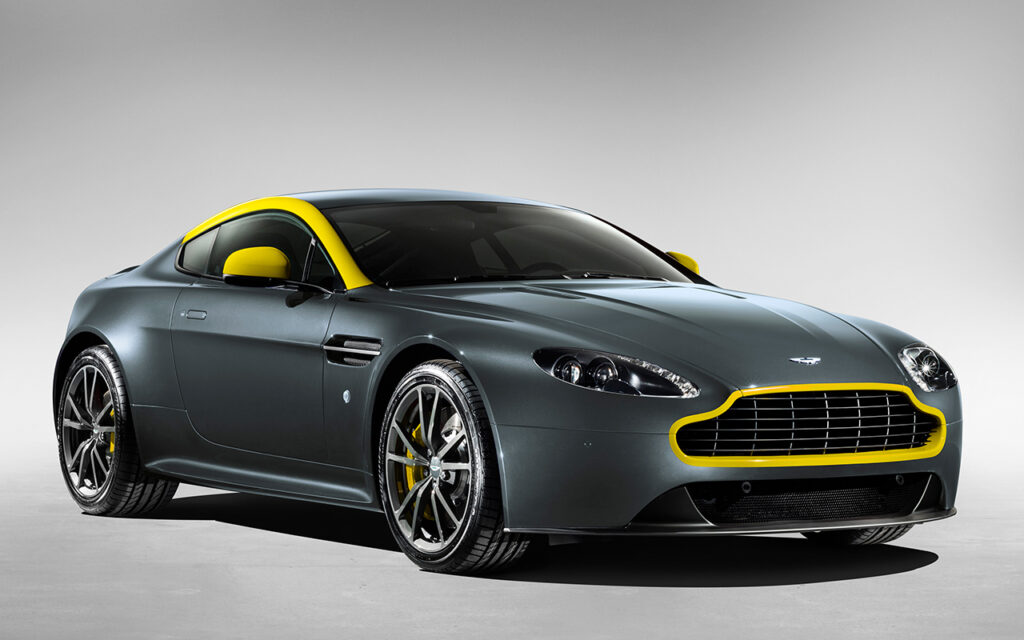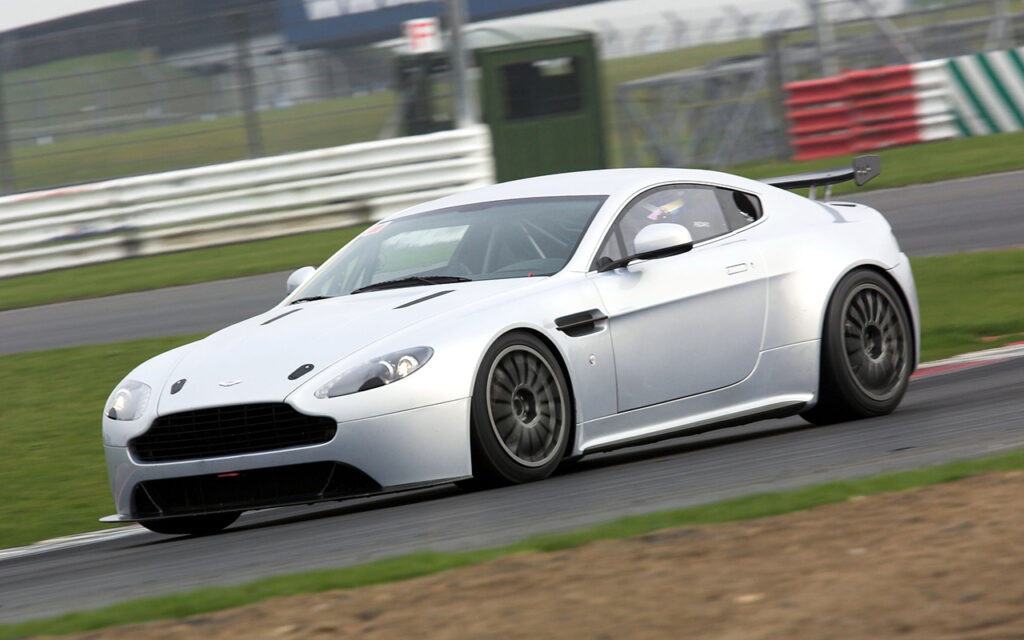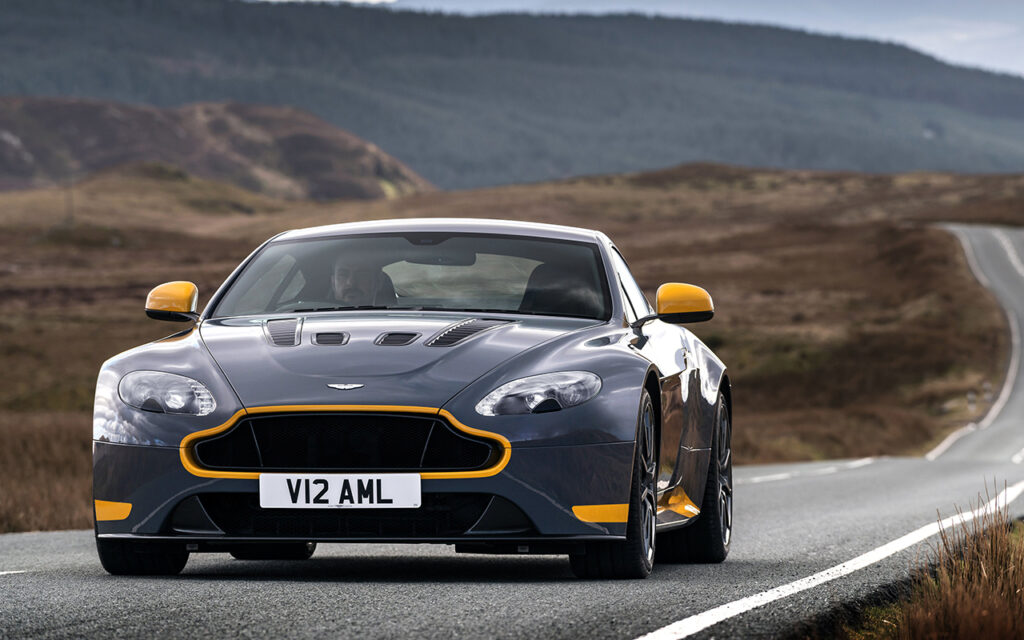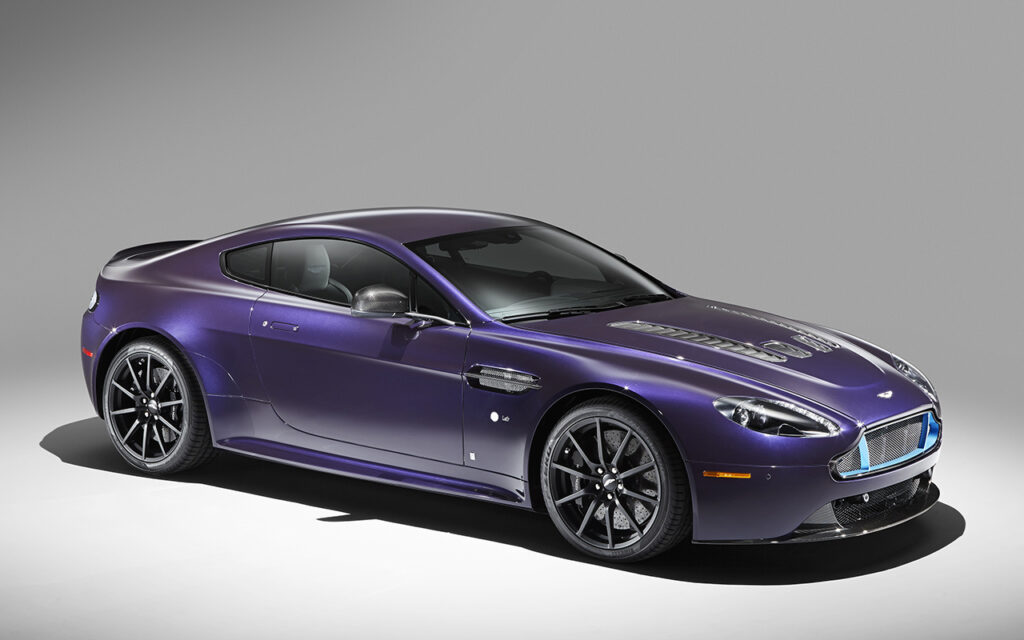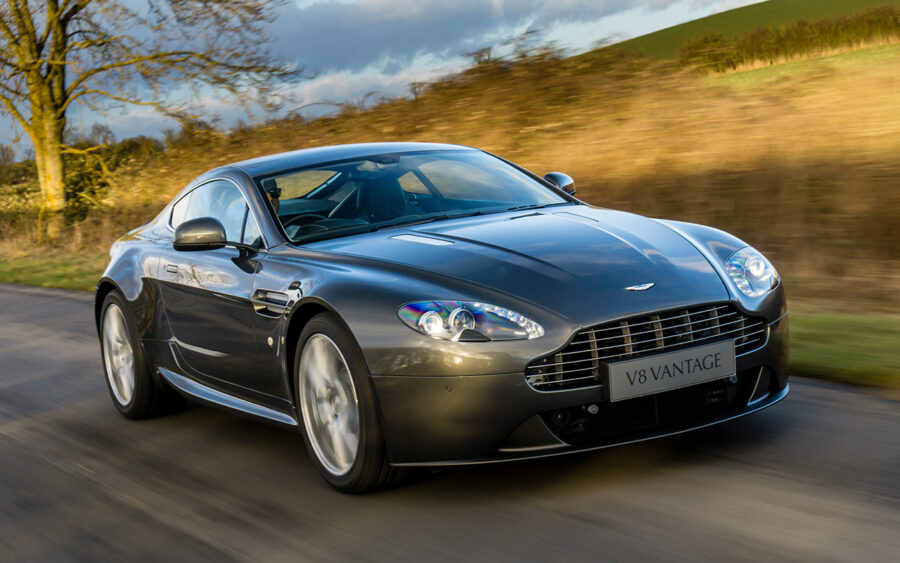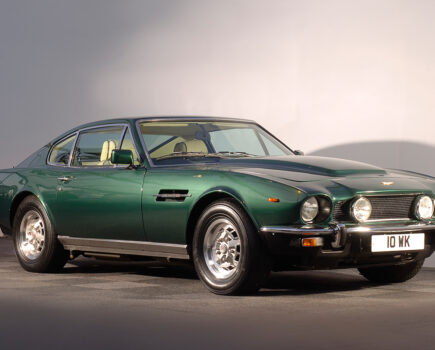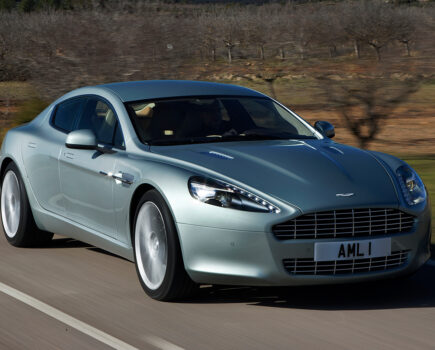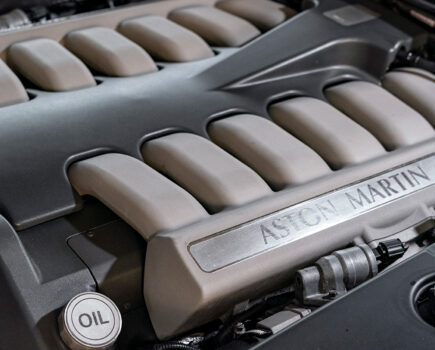The Aston Martin V8 Vantage revived a 1977 nameplate in 2005 in a bid to take on the all-conquering Porsche 911
Words: Jon Burgess
Reviving the 70s nomenclature for a small sports car, the V8 Vantage signified a serious intent at Aston Martin in 2005 to move away from its well-established 2+2 GT aesthetic.
Such was the versatility of its new aluminium ‘vertical-horizontal’ (VH) platform – in Generation II form – that the V8 Vantage was the second car to be spun off it.
Smaller, lighter and less of an all-rounder than the DB9, which carried on the 2+2 mantle of the DB7, the V8 Vantage was first seen as the AMV8 Vantage concept (AM305) of 2003, based on requirements drawn up by then-CEO Dr Ulrich Bez three years prior as Aston Martin moved to its new Gaydon headquarters.
In detail, AM305 closely resembled the V8 Vantage of 2005. Design director Henrik Fisker drew a tight two-seater with a hatchback tail. The new car would use a special V8 mounted well aft of the front axle to create a front-mid-engined layout.
Two years later, those details were confirmed. The V8 Vantage – not the DB8, as rumour had it – would use a Jaguar AJ-V8-derived, dry-sumped, 4.3-litre engine, turning a six-speed transaxle via a carbon-fibre prop shaft; a near 50/50 weight distribution was the result. Geneva – and the St George’s Day Aston parade in Windsor – introduced the two-seat V8 Vantage to the world and by 2006, with the drophead Roadster (not Volante, a tradition carried over to the Vantage’s 2018 AM6 successor) launched at the Detroit Motor Show, Vantage-based prototypes were competing at the Nürburgring and Bahrain 24 hours, driven by (among others) Aston CEO Dr Ulrich Bez. That year, the prototype finished eighth overall at the former race.
Underlining the Vantage’s sporting aspirations, Aston decided to honour its achievements not once, but twice. A small series of N24 trackday specials, also eligible for GT4 racing, were produced from January 2007, with 410bhp instead of the standard car’s 380bhp; an effective weight reduction programme shaved nearly 250kg from the kerb weight. A GT2 car joined the N24 the same year.
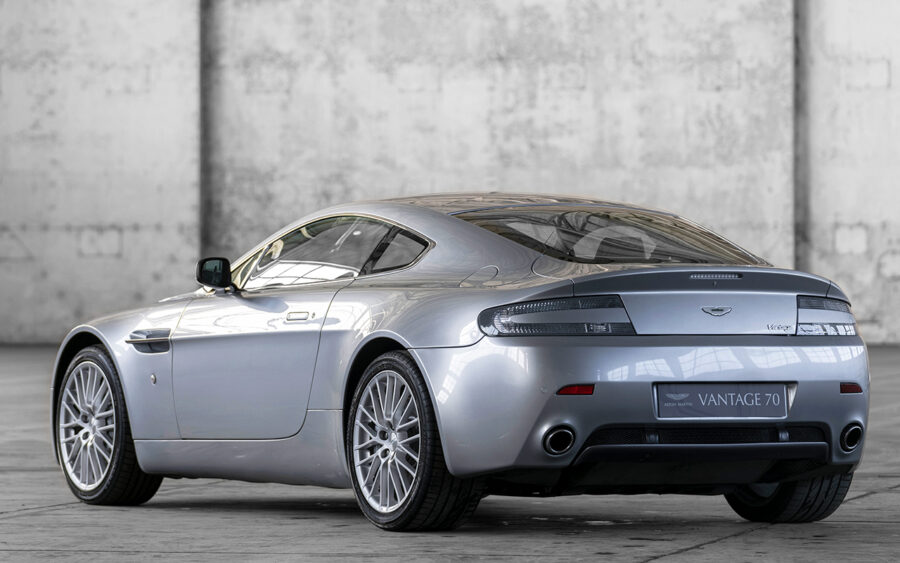
A road-biased N400 limited edition, inspired by the N24, ran to 480 units, and was released the same year split evenly between coupés and Roadsters. 480 seconds was the racer’s ‘Ring time; ‘400’ referred to the engine’s peak power output. Unlike the endurance machines and N24, could be sent through a Sportshift automated manual, developed for the original Vantage with Prodrive and released in 2006. A six-speed manual was also available, alongside three N400-specific body colours and interior trim specifications.
Meanwhile, a new Vantage model was hinted at – this time using a V12 instead of a V8. The Vantage RS concept, revealed at the opening of Gaydon’s design studios, shoehorned Aston’s 5.9-litre V12 into the Vantage’s structure. As exciting as these possibilities were, Aston had left Ford’s Premier Automotive Group by 2007, bought by a consortium of investors led by Prodrive’s Dave Richards – although he had no capital in the deal.
While reviews of the V8 Vantage and Roadster were favourable, critics and keen drivers cried out for more mid-range torque. Anticipating their concerns, Prodrive – with whom the Vantage was developed – offered an upgrade package from 2006. Suitably equipped, power went up to 425bhp, alongside a special Bilstein/Eibach suspension arrangement, new wheels, and carbon-fibre addenda comprising an air dam and rear spoiler.
By 2008, however, the calls had grown louder and a 420bhp, 4.7-litre engine was standardised across the range; larger-engined roadsters were now designated ‘Roadster 4.7’.
Improved interiors, tweaked Sportshift gearbox options and better Bilstein dampers rounded off the facelift, while in a similar fashion the DBS and DB9, the Volvo-derived key and navigation systems were replaced. Owners now used an ‘emotion control unit’ made of glass and polycarbonate to start their cars; a faster, hard-disc based sat-nav now directed them.
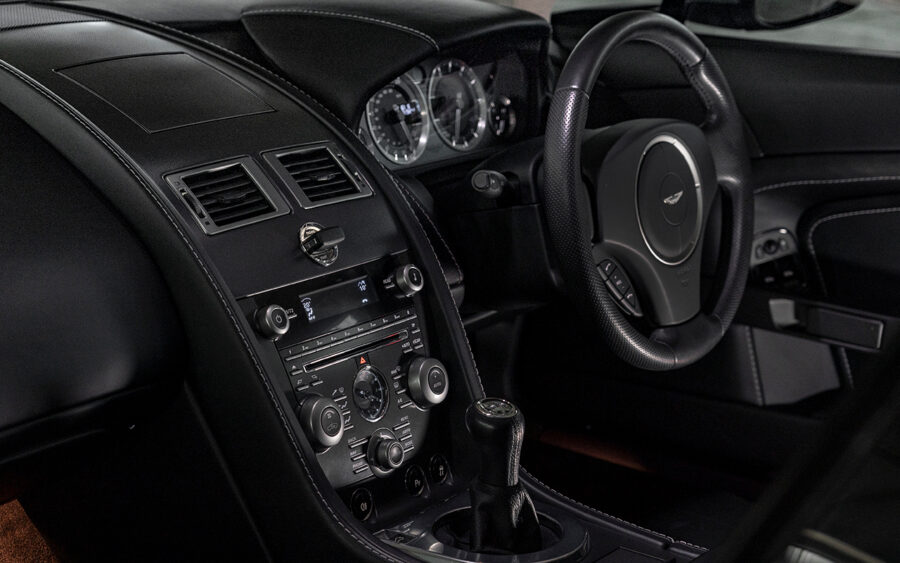
The 4.3-litre Vantage N24 bowed out in 2009 in favour of the Vantage GT4, built around the uprated Vantage coupé and its 4.7-litre engine. At the other end of the roadgoing Vantage range, the 2007 Vantage RS concept was now a production model, called V12 Vantage. Dropping a DBS-specification V12 into a far lighter structure had a dramatic effect on performance, especially when the end result weighed just 50kg more than a V8 Vantages. Unlike other Vantage models, however, the V12 used the DBS’s Touchtronic automatic if specified, instead of the Sportshift.
To reflect the mechanical changes wrought on the GT4, a roadgoing special edition appeared as homage in 2010 – the N420 coupé and Roadster. With wider sills, a carbon-fibre front air dam and rear splitter, it used the 4.7-litre V8 to great effect; like the N400, a special range of colours replicating race liveries, and interior trim pieces, were available.
2011’s V8 Vantage S was further improved. Available once again as a coupé or Roadster, power from the 4.7-litre V8 crept up to 430bhp – but the big news was the arrival of Sportshift II, an updated, seven-speed semi-automatic that saved a considerable amount of weight in the transaxle. Unlike earlier Vantages, Sportshift II was standardised; there was no six-speed manual to choose from. A limited-run V12 Vantage Zagato was also revealed that year; paying homage to the famous coachbuilders, a collaborative effort between Terrazzano and Gaydon shaped a special aluminium body.
Aston announced a 565bhp version of the V12 Vantage, known as the V12 Vantage S, in 2013; it used a revised version of the 5.9-litre V12 engine, designated AM28. Using design cues from the One-77, and an updated Sportshift III gearbox, the S and One-77 both boasted a top speed of more than 200 mph and was available in a limited run of 100 cars with a seven-speed, dog-leg manual gearbox. Another Nürburgring endurance special road car was announced in 2014, the N430; it joined a very special, limited run car built for James Bond: the DB10.
Appearing in Spectre, the DB10 used a heavily modified, widened and lengthened version of the VH Generation II structure, the basis for all V8 and V12 Vantages.
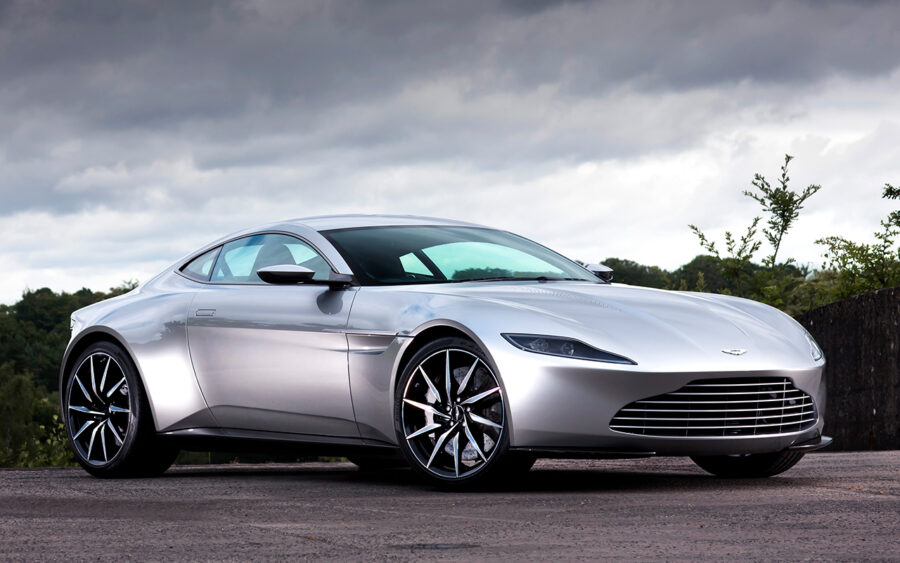
The DB10, of which ten were built, cemented a 50-year relationship between Aston Martin and Bond producers, EON Productions.
Not that the silver screen appearances slowed the pace of Vantage development, far from it. In the last four years of its life, a slew of limited run, track oriented models saw the Vantage out. First was the Vantage GT12 (2015); renamed following objections from Porsche, the lighter, GT3 eligible GT12 (from which it was initially named) used the V12 Vantage S’s 592bhp, 5.9-litre V12.
Aston’s special Q department (Q by Aston Martin), makers of the Lagonda Taraf, also produced a one-off, carbon-fibre bodied GT12 Roadster for the 2016 Goodwood Festival of Speed; a year later, the AMR and AMR Pro took the Vantage’s track aspirations to their logical conclusion.
Finally, with the all-new AM6 V8 Vantage on the way, a run of 14 Vantage V600s were announced in 2017 and delivered in 2018 by Q by Aston Martin; a final variant of the V12 Vantage combining the V12 Vantage S’s limited-run seven-speed dog-leg gearbox with special bodywork, the built-to-order cars paid homage to the historic Vantage V600, after a single wealthy customer wanted a special V12 Vantage. That customer helped fund the testing of special components by finding Q 13 more buyers to justify the means. In the end seven coupés and seven Roadsters were built.
Aston Martin V8 Vantage timeline
2003
AMV8 Concept (AM305) hints at the upcoming V8 Vantage in preview.
2005
4.3-litre V8 Vantage released.
2006
V8 Roadster launched; optional, Prodrive-developed, semi-auto Sportshift arrives; 425bhp Prodrive performance pack offered. Teams of drivers, including CEO, Dr Ulrich Bez, compete at the ‘Ring 24 Hours.
2007
GT4-eligible N24 cars produced; roadgoing, homage N400 coupés and Roadsters offered.
V12 Vantage RS concept previews V12 Vantage and commemorates the opening of Gaydon’s Design Department. Ford sells Aston Martin to an investment consortium; Aston no longer part of the Premier Automotive Group (PAG).
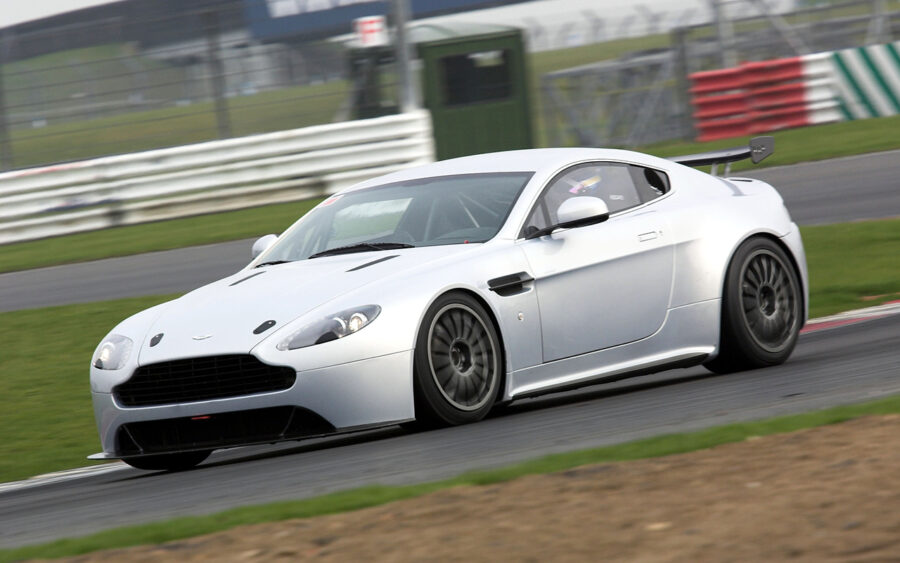
2008
More powerful 420bhp 4.7-litre V8 arrives for coupé and Roadster; interior, mechanical and suspension changes also come in.
2009
510bhp V12 Vantage launches; Vantage GT4 (V8) replaces N24.
2010
‘Ring endurance homage N420 (V8) arrives.
2011
V8 Vantage S, with 430bhp, 4.7-litre V8, and seven-speed, Sportshift II gearbox, debuts.
Coupé and Roadster offered. V12 Vantage Zagato goes on sale.
2012
Q by Aston Martin, an expanded spin-off department from Newport Pagnell’s Works Tailored division, opens to process orders for bespoke and modified Aston Martin models at Gaydon.
2013
V12 Vantage S on stream. Uprated 5.9-litre V12 and Sportshift III gearbox fitted.
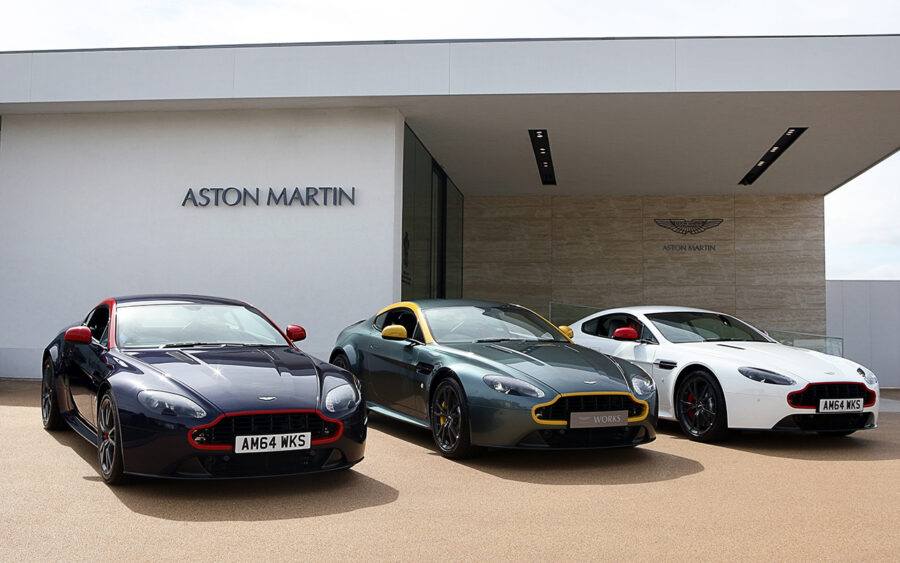
2014
‘Ring homage N430 now available; VH Generation II-based Spectre special, the DB10, appears.
2015
GT3-eligible Vantage GT12 on sale.
2016
Q by Aston Martin constructs a one-off GT12 Roadster, which appears at 2016 Goodwood Festival of Speed.
2017
Vantage AMR and AMR Pro made available.
2018
14 Vantage V600s (seven coupé, seven roadster) built under Q by Aston Martin in tribute to the 1998 Vantage V600.
